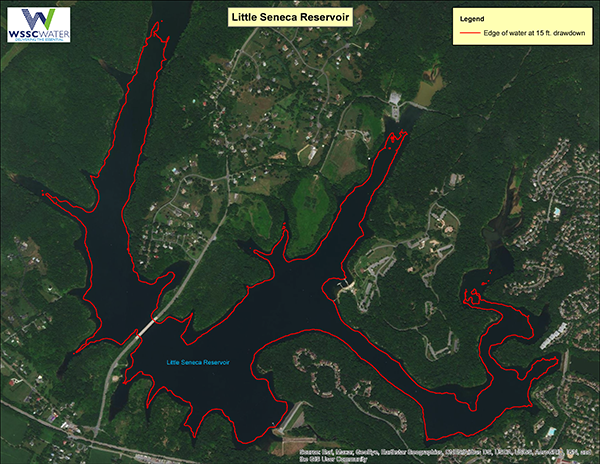Little Seneca Reservoir Project
Little Seneca Reservoir was constructed as an emergency drinking water source for local utilities during drought conditions. Water quality and capacity of the reservoir are threatened by the increase of sediment.
Little Seneca Reservoir was constructed as an emergency drinking water source for local utilities during drought conditions. Water quality and capacity of the reservoir are threatened by the increase of sediment.
Located in the Black Hill Regional Park, which is operated by the Maryland National Capital Park and Planning Commission (M-NCPPC), the Little Seneca Reservoir was built from 1983-1986. This reservoir is part of the Washington Metropolitan Regional Water Supply, with water supply use and costs shared cooperatively by WSSC Water, Washington Aqueduct and Fairfax Water.
The Little Seneca Reservoir holds four billion gallons of water and serves as an emergency raw-water supply during droughts. The reservoir supplements the Potomac River flow via discharge to Little Seneca Creek.
In addition to its purpose of a supplemental water supply, the reservoir also serves as a public amenity, with thousands of visitors taking advantage of the water and surrounding land for recreational purposes.
After 35 years of trapping and preventing sediment from migrating into deeper sections of the reservoir, it is now time to remove sediment to allow forebays to continue functioning as required. (Forebays are located at the northern entrance of the reservoir and allow sediment to settle prior to traveling further into the body of water.)
Project Components:

November 2, 2021 - Little Seneca Reservoir Forebays Sediment Removal Presentation | Little Seneca Reservoir Forebays Sediment Removal Presentation (Español)
Amado Carsky
Phone: 301-206-8382